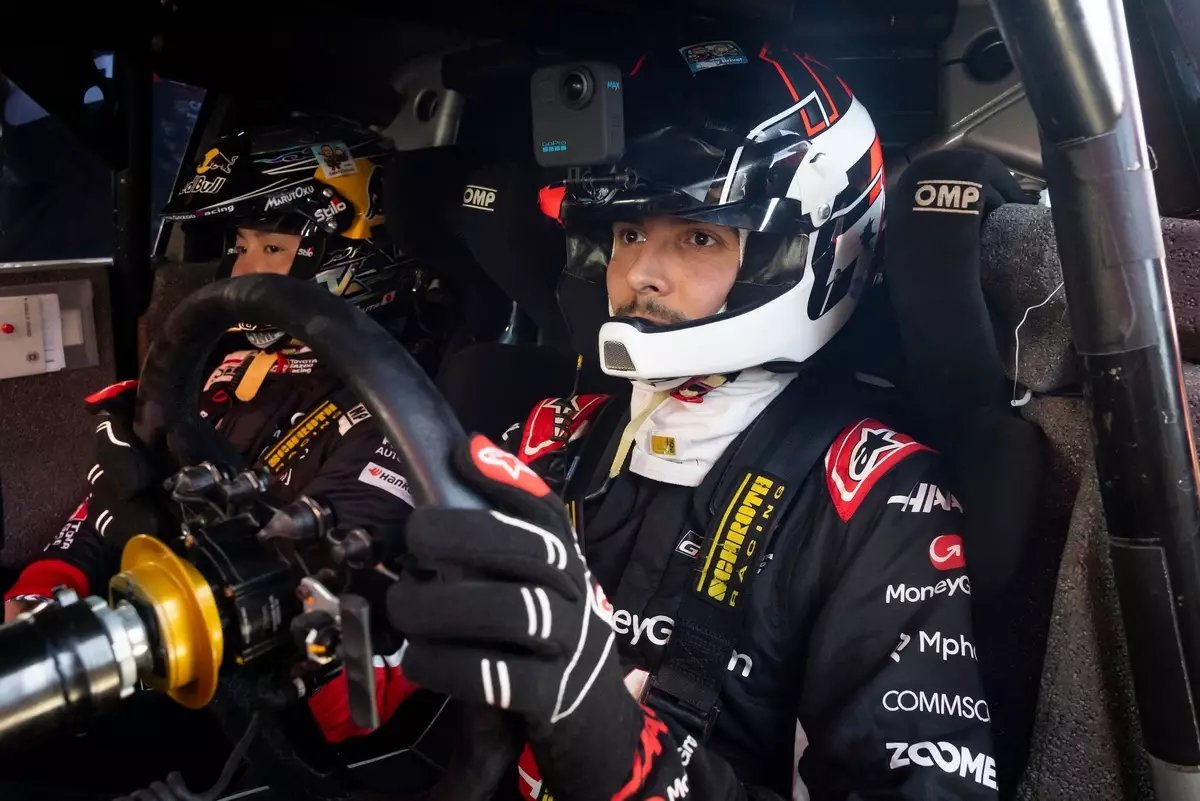In the high-octane universe of motorsports, crossing traditional boundaries can often lead to groundbreaking revelations. The recent experience of Esteban Ocon, a seasoned F1 driver, being allowed to drive a World Rally Championship (WRC) car exemplifies how openness to collaboration and surprise can unlock hidden potentials. This rare opportunity not only fueled Ocon’s personal dreams but also showcased the symbiotic relationship that can flourish between racing disciplines—if teams and automakers are willing to foster it.
Ocon’s wondrous ride in the Toyota GR Yaris Rally1 at the Goodwood Festival of Speed underscores an essential truth: motorsport is a universe where passion and curiosity can reignite even the most established careers or perceptions. What seemed like a straightforward promotional stunt or a casual experience quickly turned into a symbolic gesture emphasizing that drivers, irrespective of their disciplines, possess an innate desire to push their boundaries and explore alternative avenues for growth and entertainment.
The fact that Toyota and Haas collaborated behind the scenes to facilitate Ocon’s rally debut signals a paradigm shift—one where manufacturers and teams recognize the value in nurturing diverse skill sets and passions. This approach can serve as a template for more integrative endeavors that challenge conventional siloing within motorsport categories. Drive beyond the lap time or podium finishes, and what you find is a passionate pursuit of mastery across disciplines, creating a richer, more versatile motorsport ecosystem.
The Deep Engineering Marvel: Insights Beyond the Surface
What truly makes Ocon’s account compelling is his detailed appreciation of the WRC car’s craftsmanship. His description of the GR Yaris Rally1 as “super well engineered” reveals a profound respect for the technical prowess embedded in rally cars—often regarded as the unsung heroes of motorsport engineering. This sentiment proves that the allure of rally cars isn’t just their off-road capability but their design philosophy that prioritizes resilience, agility, and precision.
From the ease of handbrake operation to the intuitiveness of the steering and throttle response, Ocon’s perspective highlights how rally cars are, in many ways, prototypes of adaptable and innovative engineering. This isn’t merely a vehicle for competitive racing; it’s a testament to the relentless pursuit of perfection in design, which can inspire innovations back into F1 and other racing categories.
Furthermore, Ocon’s joy in experiencing the car’s capabilities underscores a vital lesson: exposure to different automotive worlds can unlock creative ideas that might otherwise remain hidden within specialized silos. The cross-pollination of engineering principles between F1 and WRC could ignite unprecedented advancements, fostering more resilient, efficient, and adaptable vehicles—benefiting both performance and sustainability.
Chasing Childhood Dreams and Future Horizons
Ocon’s heartfelt reflection on his childhood aspiration to own and drive a WRC car underscores the emotional depth behind motorsport pursuits. It’s a stark reminder that behind every professional driver is a passionate enthusiast who dreamed big when the world was simpler and life full of wonder. His revelation that he once fantasized about owning a rally car that could be driven daily underscores how personal aspirations intertwine with professional ambitions.
While Ocon is realistic about his future prospects—dismissing a move to Rally1 class for now—his openness to testing and enjoying rally drives for fun signals a vital shift in mindset. It’s an acknowledgment that motorsport can and should be approached with joy, curiosity, and a willingness to learn, not just relentless competition. This attitude could foster a new generation of drivers and engineers who see flexibility and diverse experiences as integral to their development.
In the broader context, Ocon’s experience inspires younger racers to pursue multidimensional careers. The line between disciplines can and should blur, allowing talent and passion to flourish in multiple directions. A driver’s journey isn’t confined to a single race type or a set of rules; it’s a continuous exploration of boundaries and personal growth, fueling innovation and a deeper connection with the art of racing itself.
Ocon’s unexpected rally stint is more than a fleeting thrill; it’s a clarion call for the motorsport industry to embrace diversification. It reveals that the greatest innovations—and perhaps even the next generation of racing legends—may emerge from unexpected crossovers and sincere passion. The boundaries we often impose for clarity or tradition can limit the full potential of automotive technology and driver development. Unlocking this potential requires openness, curiosity, and a willingness to surprise ourselves.
This experience illustrates that motorsport is a reflection of boundless human ambition—an arena where dreams aren’t just to be admired but actively pursued. If teams, manufacturers, and drivers continue to foster this mindset, the future of racing promises not only faster cars but also richer, more inspiring stories that captivate fans and innovators alike.

